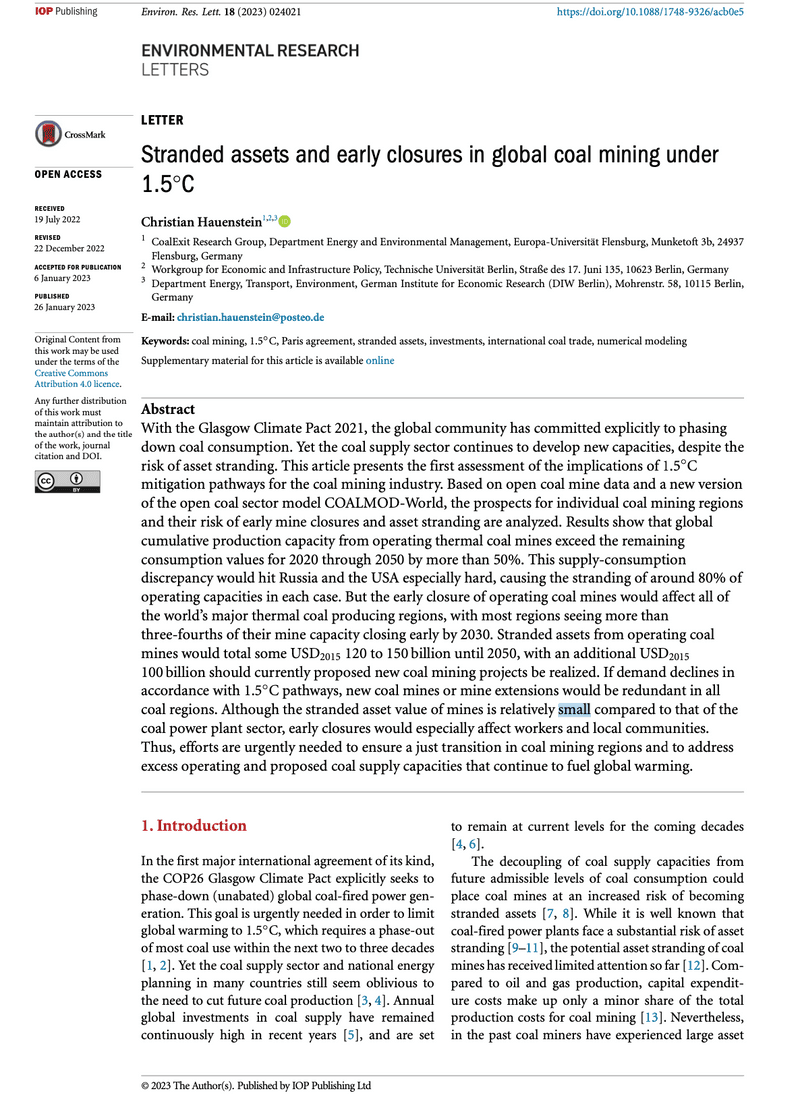Stranded assets and early closures in global coal mining under 1.5∘C

With the Glasgow Climate Pact 2021, the global community has committed explicitly to phasing down coal consumption. Yet the coal supply sector continues to develop new capacities, despite the risk of asset stranding. This article presents the first assessment of the implications of 1.5∘C mitigation pathways for the coal mining industry. Based on open coal mine data and a new version of the open coal sector model COALMOD-World, the prospects for individual coal mining regions and their risk of early mine closures and asset stranding are analyzed. Results show that global cumulative production capacity from operating thermal coal mines exceed the remaining consumption values for 2020 through 2050 by more than 50%. This supply-consumption discrepancy would hit Russia and the USA especially hard, causing the stranding of around 80% of operating capacities in each case. But the early closure of operating coal mines would affect all of the world’s major thermal coal producing regions, with most regions seeing more than three-fourths of their mine capacity closing early by 2030. Stranded assets from operating coal mines would total some USD2015 120 to 150 billion until 2050, with an additional USD2015 100 billion should currently proposed new coal mining projects be realized. If demand declines in accordance with 1.5∘C pathways, new coal mines or mine extensions would be redundant in all coal regions. Although the stranded asset value of mines is relatively small compared to that of the coal power plant sector, early closures would especially affect workers and local communities. Thus, efforts are urgently needed to ensure a just transition in coal mining regions and to address excess operating and proposed coal supply capacities that continue to fuel global warming.